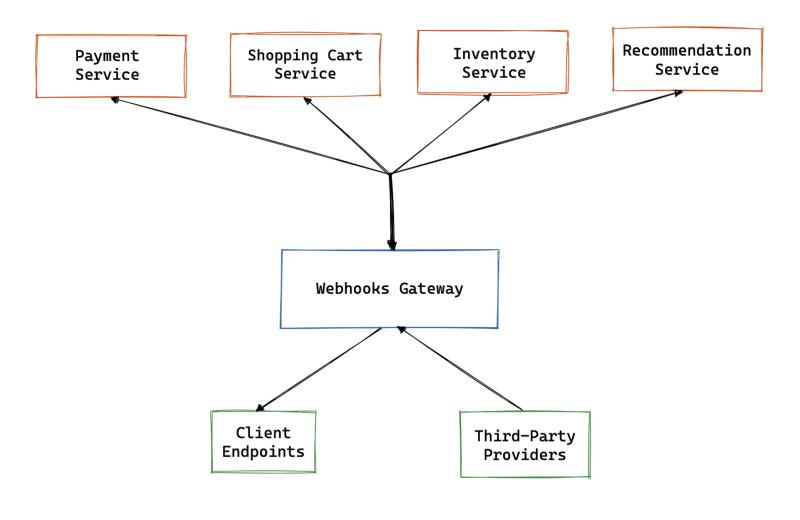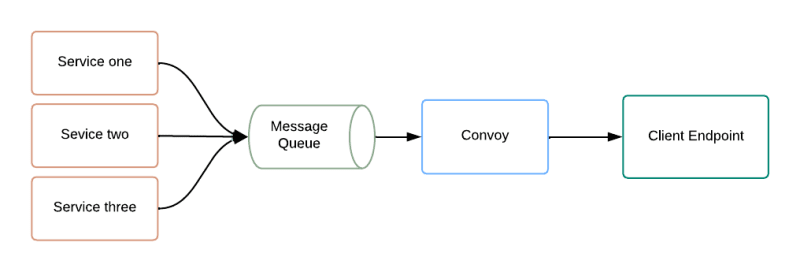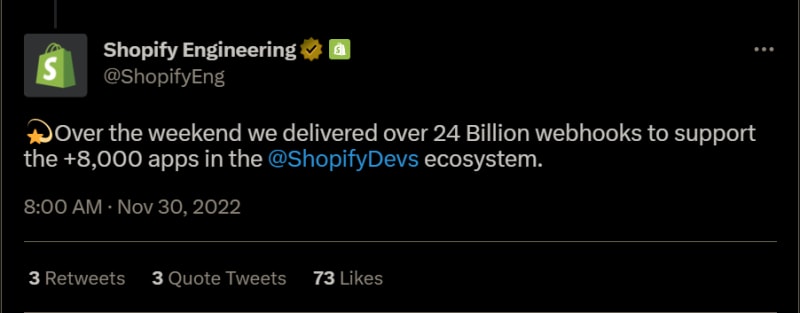Introduction
A webhook gateway is a webhook management tool that sits between a webhook provider and the webhooks consumer. It acts as both a reverse and forward proxy for webhooks. It can be deployed by both the API provider that sends webhooks and the consumer that receives webhooks to handle webhook events multiplexing and de-multiplexing respectively.

This article will consider ten of the most common use cases of a webhook gateway, with emphasis on the features offered by Convoy. Convoy is a high-performance open-source webhooks gateway to which platform teams can deploy to manage their webhooks end to end.
The use cases to be discussed are
- Reliable Webhook Delivery
- Routing in Microservices
- Routing with Message Brokers
- Static IPs
- Security
- Scale
- Monitoring and Alerts
- Easy Debugging
- Geolocation Based Routing
- Versioning
Reliable Webhook Delivery
Webhooks–which are simply HTTP push– fail frequently due to reasons that include but are not limited to downtimes, spikes in network requests, flaky internet, and expired SSL certificates.
A webhook gateway solves this problem by implementing features such as the following:
- Retries: to automatically resend webhook events a specified number of times.
- Circuit breaking: to stop sending requests to endpoints that have failed consecutively, thereby not wasting resources on a dead endpoint.
- Rate limiting: to prevent overloading client endpoints by delivering events at a rate that the client can process.
- Timeouts; to prevent waiting endlessly for response.
A webhook gateway like Convoy exists to ensure the deliverability of your webhook events by implementing these features, while the rest of your application handles other business logic.
Routing in Microservices
In a microservice architecture, many of the services send out webhook events, they may also receive events from third-party providers. How do you manage these ingress and egress webhooks traffic? A webhook gateway can be deployed and configured to route incoming webhooks to the services where they are to be consumed, in the same manner, it would receive webhook events from your services and forward them to client endpoints. This flow of events is illustrated in the image below.

Source: Why do microservices need a Webhooks Gateway?
Webhook gateways are able to determine the destination of webhook events by checking the header and payload of each request.
Routing with Message Brokers
Webhook events are asynchronous by nature and Message Brokers are designed to facilitate asynchronous communication, hence, your webhook deployment that integrates with message brokers allow you to completely bypass the shortcomings of REST API
Connections when sending webhook events.
Convoy recently announced the release of its Message Broker integrations to ingest webhooks from backend services to Convoy. For API providers, this means that they will be able to ingest webhook events from their backend services into Convoy using Message brokers. Convoy currently supports Google PubSub and Amazon SQS.
The diagram above illustrates Convoy pulling webhook events from a message queue and then sending them to a client endpoint. Convoy allows you to send events through both message brokers and a REST API. Read more about it in this blog post.
Static IPs
If you are an API provider that sends webhook to consumers who are in sectors where security is a top priority, they may have strict security policies that include whitelisting IPs for all inbound webhooks on their firewalls. To serve these consumers, you need to provide them with a Static IP address from which your events would be coming for them to whitelist. However, most modern ways of deploying applications make it such that IP addresses are ephemeral by default instead of Static.
One way to fix this is to deploy a webhook gateway that would serve as a forward proxy for your webhook-sending application. Convoy allows you to configure your outbound webhook events with a forward proxy which will have a Static IP.
The simplified diagram shows how the IP of your outbound requests changes as it is transmitted to a client's endpoints.
Security
On the consumer end, the webhook gateway is still the ideal point to implement several security mechanisms. Both the webhook publisher and the webhook consumer play complementary roles to secure requests against malicious attackers. Some security measures that API providers and consumers can apply at the webhook gateway level include:
- Signed Payload: An API publisher can prevent a replay attack when they sign their payload and include a generated timestamp to their signature on each request. On the consumer side, the signed payload would be matched against each expected variable, to verify that the signature has not been altered.
- Static IP: A consumer app would be able to verify that the Static IP address of all incoming webhook events is whitelisted.
- Mutual TLS: Consumer apps equally use mutual TLS to ensure that connection requests from third-party providers are truly from the said provider.
Scale
We live in a world of APIs. Since APIs are the glue that holds the digital world together, it is not surprising that billions of webhooks are delivered every day. Below is an example of a Shopify BFCM Webhooks stats:
With a webhook gateway handling all of your webhook traffic, you can independently scale up and down during and after peak periods. This also means that your webhooks implementations stay decoupled from the rest of your backend services. If your webhook gateway is a SaaS like Convoy, the developers in your product team do not have to get deeply involved in the webhook implementation nor get caught up in its complexity, permitting them to focus on your core business product.
Monitoring and Alerts
Webhooks fail all the time, one reason is that App owners are constantly pushing changes to their apps. It is good behaviour for a webhook delivery system to be able to inform the app owner when their app is down. Convoy does well in this area as it allows you to implement different solutions for monitoring. For example, you can monitor uptime or monitor the average request per minute on your webhooks route, and flag it when they're below a certain threshold. Also, after an endpoint consistently fails, Convoy disables the endpoint and sends an email to the developers to triage.
Easy Debugging
In addition to enabling monitoring, a webhook gateway can make it easier to debug failed webhook requests. For example, Convoy includes a web interface where an operator can filter through event logs, search through the webhook payloads, see the response body from each request, discover the point where a webhook is failing, and even manually resend these webhooks. The dashboard is available to you whether you are an API provider or a consumer.
Geolocation-Based Routing
Another possible way to use your webhook gateway to scale your product is to deploy instances of it at various locations closer to your consumers. Routing webhook requests based on clients' location works similarly to the traditional API Geolocation Based Routing. There are several factors to put into consideration when deciding whether you need a geo-location-based routing solution. But the end result is the same when you do decide to implement it: you primarily mitigate issues caused by latency.
To illustrate how this would work in a real application; your backend services are deployed in a server in the UK, but you have consumer apps running in India. When you deploy Convoy as your webhook gateway closer to India and write webhook events to a message broker, Convoy automatically receives them and then routes them to your clients in India. Routing these events to clients in India would involve lesser network overhead because of the location of your webhook gateway.
This practice is common with API gateways, we think that in the case of a webhook gateway, this might only be relevant for a large company with several consumers in distant parts of the world.
Versioning
Webhook requests signatures evolve over time either in response to bug reports or the need for a new feature, but as they evolve, versioning these signatures become important as you gradually face out old features. Versioning also allows API consumers to adopt new changes to the signature at their own pace. The Convoy OSS and Cloud software also supports this
feature.
Conclusion
So far you have seen the most common ways that one can utilize a webhook gateway.
Convoy democratizes the best features of webhook infrastructures used at top tech companies such as Stripe and PagerDuty into a single binary. When setting up Convoy for your product, you can pick any of these features that suit your needs right out of the box.
Help me out!
If you feel like this article helped you understand Webhooks better! I would be super happy if you could give us a star! And let me also know in the comments ❤️
https://github.com/frain-dev/convoy







Top comments (0)